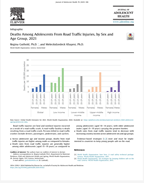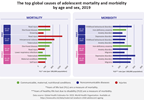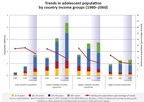
Strengthening adolescent-responsive health systems
Overview
An estimated 3000 adolescents die every day. Many hundreds of thousands more experience illness and injuries. With the support of the health and other sectors, not only can many of these deaths be prevented, but adolescents can also be protected from unnecessary ill-health or injury. At the individual level, for example, routine vaccinations can contribute to preventing infectious diseases. Comprehensive sexuality education and condom promotion and distribution can contribute to preventing unintended pregnancy and STIs including HIV. Enrolling and keeping adolescents in school can contribute to a range of positive health outcomes. At the community level, mosquito control and house spraying can help protect adolescents from malaria. Peer mediation can contribute to preventing interpersonal violence. Reductions in household air pollution can contribute to preventing respiratory illnesses. Improved water and sanitation can contribute to preventing diarrheal diseases. At the societal level, laws to ban child marriage and female genital mutilation can contribute to preventing harmful practices. School-based bullying prevention can contribute to preventing interpersonal violence. Reductions in access to firearms can contribute to preventing suicide.
In adolescence, health services have an important role to play in addressing a subset of conditions that have a large contribution to adolescent disease burden and are sensitive to timely interventions by health services, such as mental health conditions, sexual and reproductive health needs, malnutrition and communicable diseases. However, health expenditures tend to be disproportionately skewed toward adults and the elderly. Investments are needed to build adolescent responsive health systems with a focus on regulations addressing adolescent evolving capacity and autonomy, anticipatory models of care that can effectively detect and address these risks within an adolescent’s everyday context, adolescent competent providers, adolescent protective financial policies and adolescent-responsive health information systems.
WHO is working to support Member States to create transformative outcomes for the world 1.2 billion adolescents and generations to come, through committing to urgently scale up efforts to respond to the needs of adolescents in service delivery, financing and governance. This work will support the implementation of the WHO's 13th General Programme of Work, and more specifically its target of “1 billion more people benefitting from universal health coverage” by 2023.















